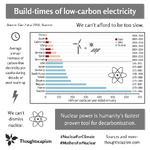lpetrich
Contributor
Bavaria Enters Act 3 of Tragicomic Odyssey Of The Hydrogen Fleet - CleanTechnica
Biofuels Vs Synthetic Fuels: The Five Points That Favor Waste Biomass To Fuels - CleanTechnica
 Energy density - crude oil is at 42 MJ/kg, close to liquid and solid hydrocarbons, as much as 46 MJ/kg. Fat is close at 38 MJ/kg, but sugars, carbs, and proteins are much less at 17 MJ/kg, and wood is 18 MJ/kg. So food waste is about 2.5 times worse than hydrocarbons. Dried cow and camel dung is at 15.5 MJ/kg, rather close to food waste.
Energy density - crude oil is at 42 MJ/kg, close to liquid and solid hydrocarbons, as much as 46 MJ/kg. Fat is close at 38 MJ/kg, but sugars, carbs, and proteins are much less at 17 MJ/kg, and wood is 18 MJ/kg. So food waste is about 2.5 times worse than hydrocarbons. Dried cow and camel dung is at 15.5 MJ/kg, rather close to food waste.
So from global food waste, one gets the equivalent of 1 billion tons, and for global livestock dung, I get 15 billion tons from scaling up from Europe, or 6 billion tons of oil. Food waste won't compete very well, but livestock dung might.
The article continued with that kind of snickering, without any detailed discussion of the difficulties of using hydrogen in vehicles.The hydrogen chorus is again singing, discordantly and joyfully, as Bavaria continues along the tragicomic journey which inevitably leads to abandoning hydrogen after wasting much governmental money and delaying electrification. A tiny, two-car Siemens light-rail passenger train has completed trials this week and sometime in 2024 will go into service, for a few months.
Biofuels Vs Synthetic Fuels: The Five Points That Favor Waste Biomass To Fuels - CleanTechnica
That's very overconfident about electrification, especially in long-distance trucks, ships, and airplanes. One needs good energy density, and it's hard to compete with hydrocarbons.First, the volumes required are much lower than the volumes required for current fossil fuels. Electrification of all ground transportation and much of aviation and maritime shipping, renewable generation of electricity, heat pumps for commercial, residential, and industrial heat, and other electrification of industrial heat above 200° Celsius means that the total tonnage of liquid fuels required will be a tiny fraction of today.
Everything I've seen in practice involves baking the biomass, often with water added.Second, there are a lot of pathways to biofuels from waste biomass. I’m not committed to any of them, and don’t consider myself an expert in the chemical engineering for them.
World Oil Statistics - Worldometer - 35 billion barrels per year, 300 lb/barrel - that's 4 billion tons per year. ConsultingThird, the sheer volume of waste biomass and collection chokepoints where automation can be applied is staggering compared to the need for liquid fuels. Waste stalks at harvest time. Livestock dung in industrial feedlots, dairy barns, and abattoirs. Food waste at production plants, distribution warehouses, and large-scale grocery stores. Wood scraps at timber mills. Separation of food scraps in urban composting schemes.
I’m completely unconcerned about efficiencies when we have 2.5 billion tons of food waste globally, and 1.5 billion tons of livestock dung in Europe alone.
So from global food waste, one gets the equivalent of 1 billion tons, and for global livestock dung, I get 15 billion tons from scaling up from Europe, or 6 billion tons of oil. Food waste won't compete very well, but livestock dung might.
Fourth, we’re already making biodiesel in sufficient quantities for all of maritime shipping in my projections.
...
Finally, all of the waste biomass I lean into is a major climate problem. At present, the volumes are so large that the stuff piles up in middens or is buried in landfills. Anaerobic decomposition occurs for the stuff that’s not at the surface, and methane ensues.



